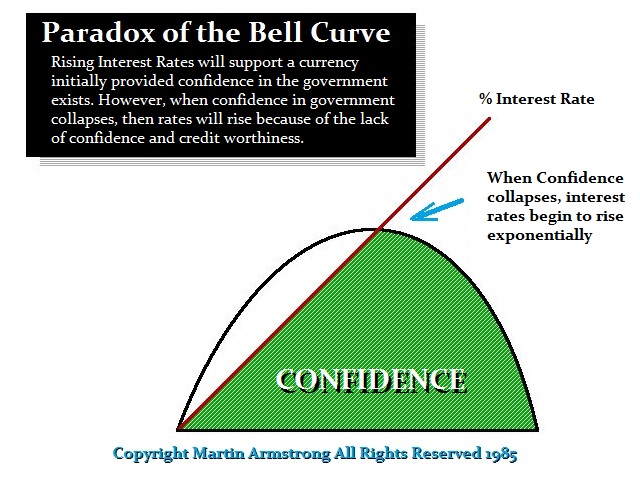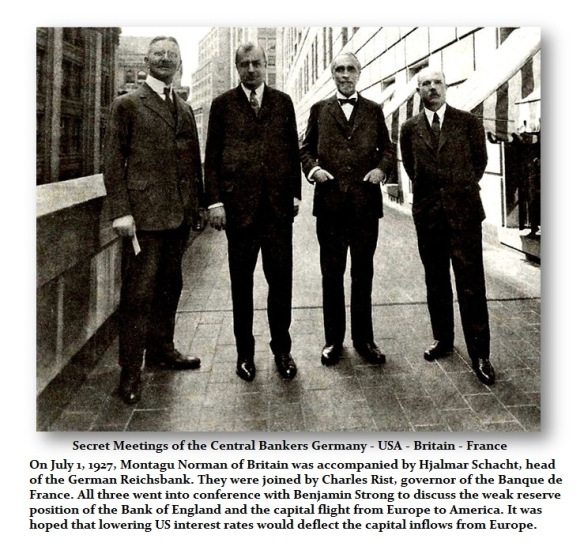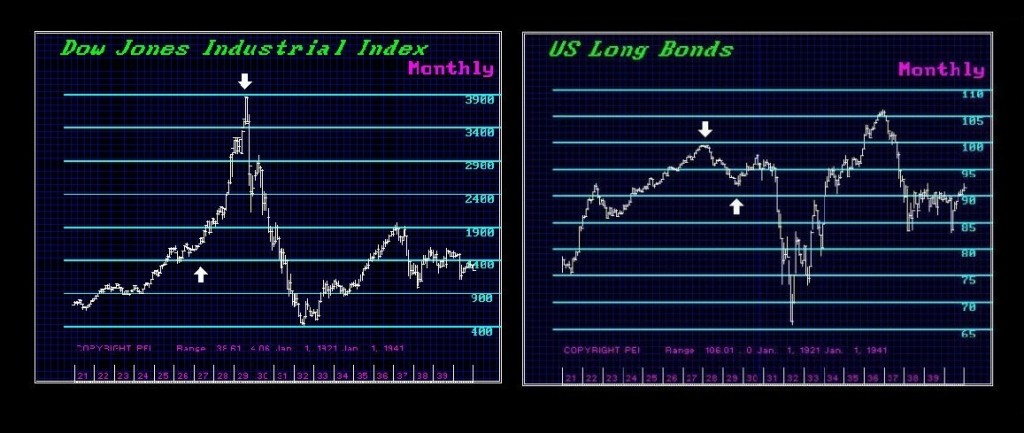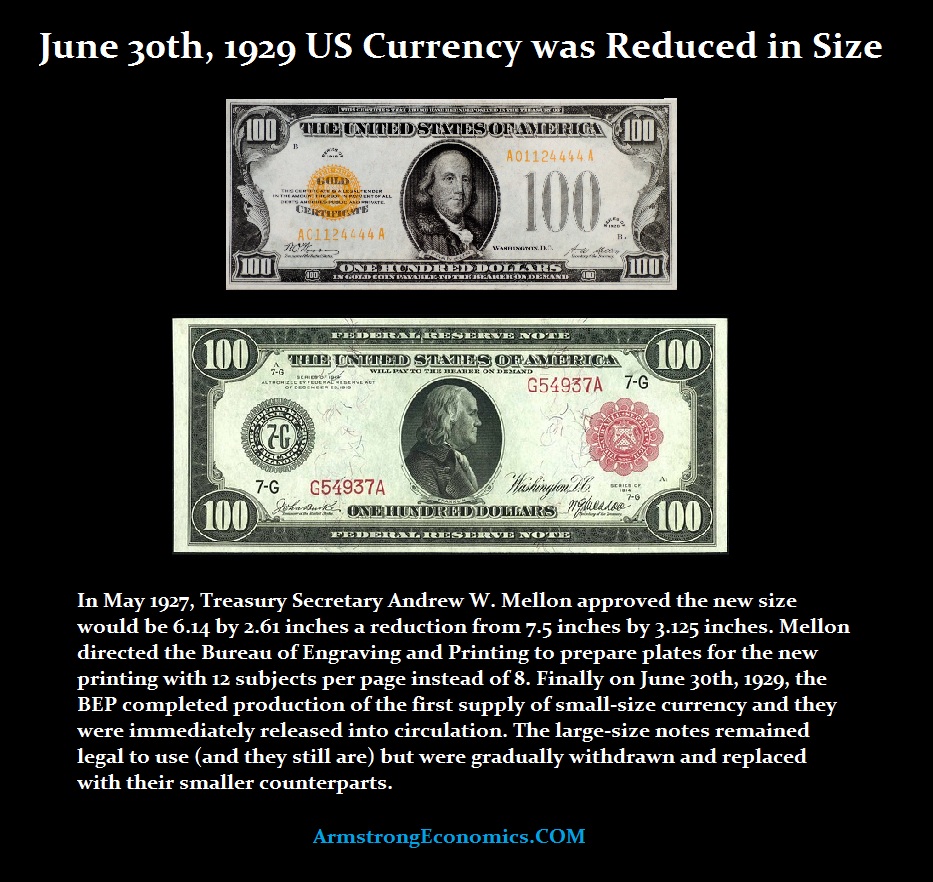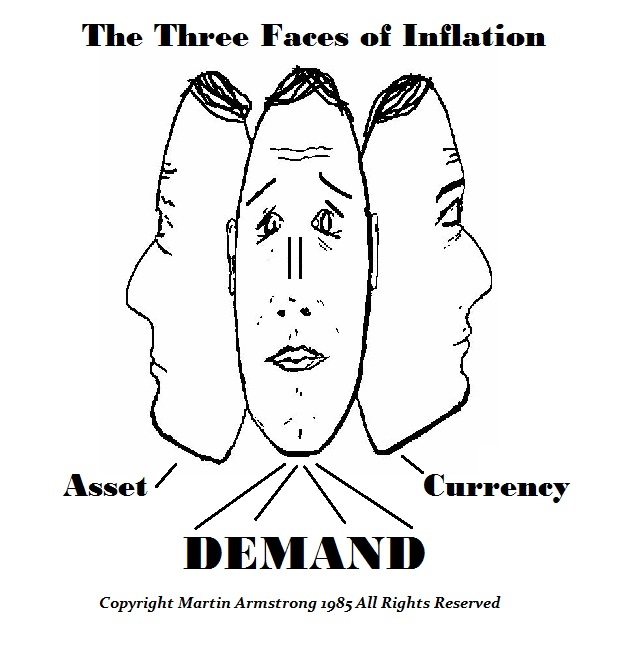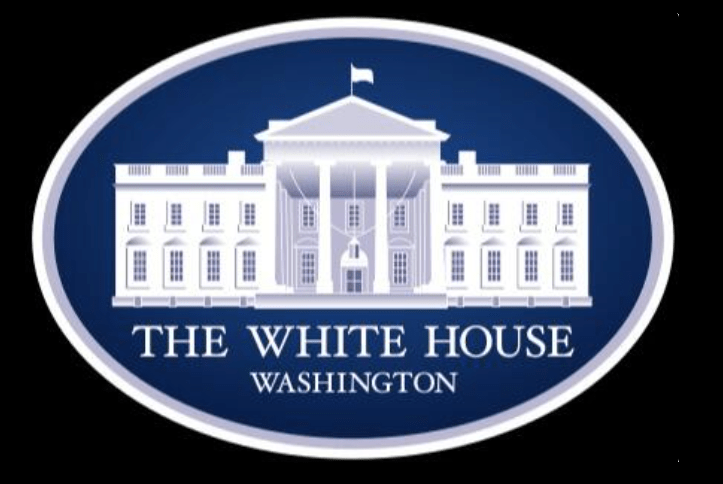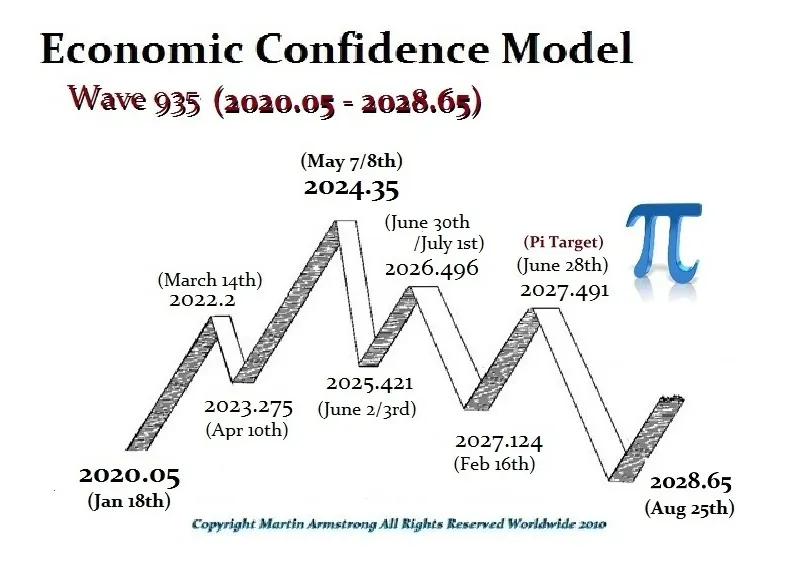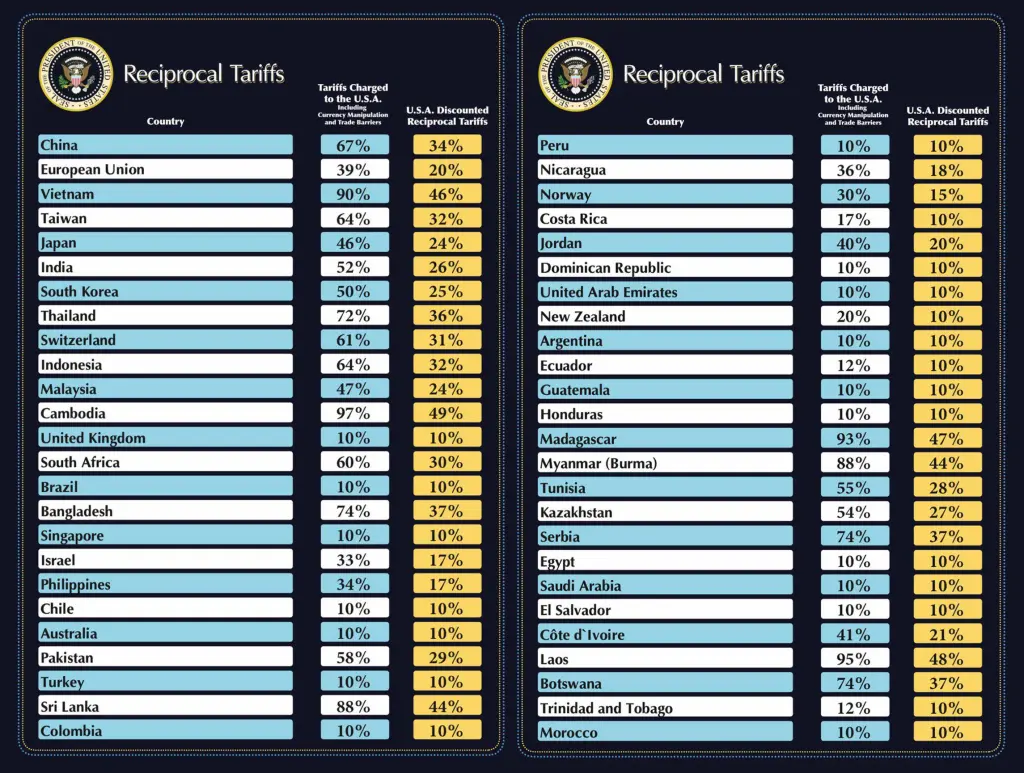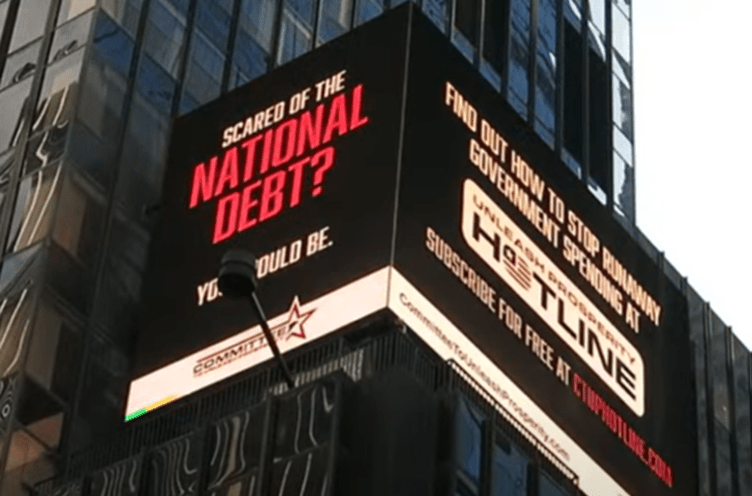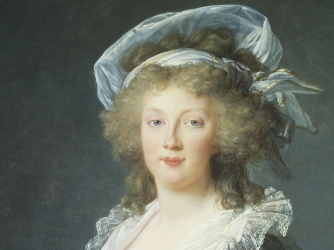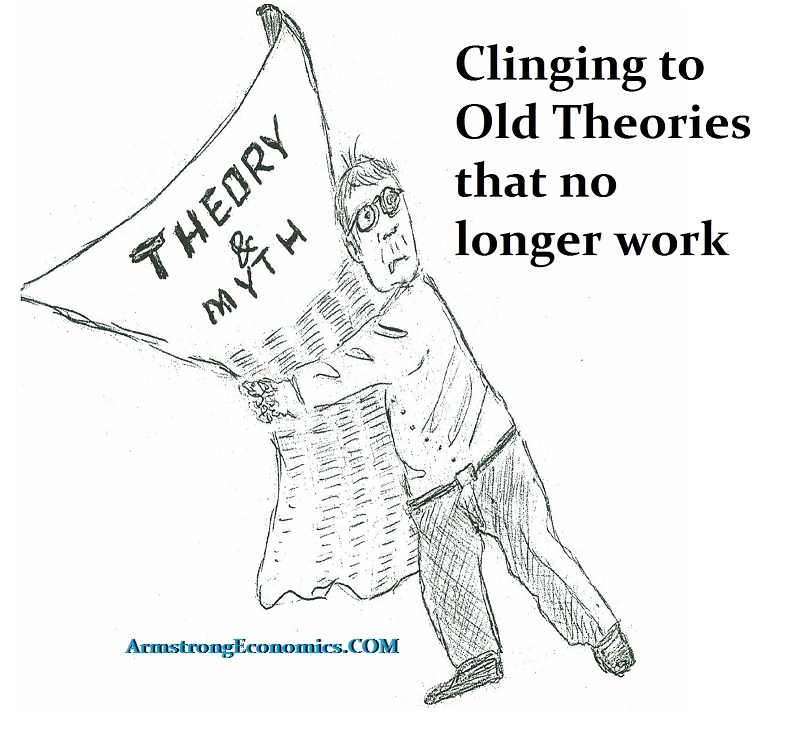 QUESTION: Mr. Armstrong, I think I am starting to understand your view of inflation. It is very complex. I think some people cannot think beyond a simple one dimension concept as you often say. So I am trying to be more dynamic in my thinking process. Here you point out that when debt is collateral it is the same as printing money but worse because it pays interest. Then you point out that hyperinflation takes place not because of printing money but because a collapse in confidence and people then hoard their wealth which reduces the economic output and that compels a government to print more to cover expenses. So there is a line that is crossed and kicks in that collapse in confidence as in Venezuela. This is very interesting but complex. Is this a fair statement?
QUESTION: Mr. Armstrong, I think I am starting to understand your view of inflation. It is very complex. I think some people cannot think beyond a simple one dimension concept as you often say. So I am trying to be more dynamic in my thinking process. Here you point out that when debt is collateral it is the same as printing money but worse because it pays interest. Then you point out that hyperinflation takes place not because of printing money but because a collapse in confidence and people then hoard their wealth which reduces the economic output and that compels a government to print more to cover expenses. So there is a line that is crossed and kicks in that collapse in confidence as in Venezuela. This is very interesting but complex. Is this a fair statement?
 ANSWER: You are doing very well. You are correct. Some people cannot get beyond an increase in money supply is automatically inflationary one-dimensional thinking. If that was true, then why did 10 years of Quantitative Easing by the ECB fail completely to create inflation given that theory? It is like brainwashing kids with global warming ignoring all evidence to the contrary.
ANSWER: You are doing very well. You are correct. Some people cannot get beyond an increase in money supply is automatically inflationary one-dimensional thinking. If that was true, then why did 10 years of Quantitative Easing by the ECB fail completely to create inflation given that theory? It is like brainwashing kids with global warming ignoring all evidence to the contrary.
There is yet another dimension that you have to add to this complexity. The BULK of the money is actually created by the banks in leveraged lending. If I lent you $100 and you signed a note that you would repay it, then the note becomes my asset on my balance sheet. I can take that to a bank and borrow on my account receivables. In this instance, just you and I are creating money. Now let a bank stand between us. I deposit $100 and they lend it to you. We now both have accounts that show we have $100. We just doubled the money supply and nobody printed anything. These theories they cling to are old and antiquated. They pre-date even consumer credit and go back to the days of Gresham’s law from the 16th century. I think a few things have changed since then.
These people that yelled that Quantitative Easing would produce hyperinflation and gold would soar, refuse to admit that everything they have relied upon is an old theory that no longer applies to our modern society. Money is now debt issued by the government, debt/credit created privately, and the physical money issued. But the actual paper money is a tiny fraction of the real money supply. The common thread between it all is CONFIDENCE.
Just look at Turkey. Erdogan has now been forced to raise interest rates after taking control of the central bank and assuming he could just dictate what rates should be. The value of the lira falls so that compels him to print more to pay the bills. It is NOT the other way around. He had pleaded with the people to turn in their dollars. The people are hoarding money in dollars and euros because they do not trust the Turkish lira or Erdogan.
Inflation and interest rates follow a Bell Curve. Everything will be normal until confidence is lost. Once that threshold is crossed, then hyperinflation begins and interest rates rise in a desperate move to try to attract capital and confidence. This simplistic perspective of an increase in the money supply produces inflation is just so childish it demonstrates these people have never just looked at the charts and are incapable of conducting research no less comprehend more than one dimension at a time. This theory of simply increasing the money supply will produce inflation is what was behind the entire central bank management of the economy. I have quoted Paul Volcker, in his Rediscovery of the Business Cycle where he states clearly that this view of Keynesian economics failed back in the 1970s. Yet these people continue to cling to these theories no matter how many times they have been proven to no longer apply to our modern society.
These people who cannot understand the complex relationship of money supply v inflation should work for the government. The central banks even back in 1927 looked at interest rate differentials and have attempted to use that to manipulate currency values. The Fed lowered interest rates in 1927 hoping capital would return to the higher interest rates offered in Europe to prevent the economic collapse. The smart money realized that something was wrong and the capital flows moved into the US share market and the Dow just as they smell a rat in Venezuela and Turkey. Capital lost confidence in Europe and the higher interest rates failed to attract capital as we see in Turkey and Venezuela right now. As the capital fled Europe, they drove the dollar higher. The invisible line of confidence was crossed which manifested in the Currency Crisis of 1931.
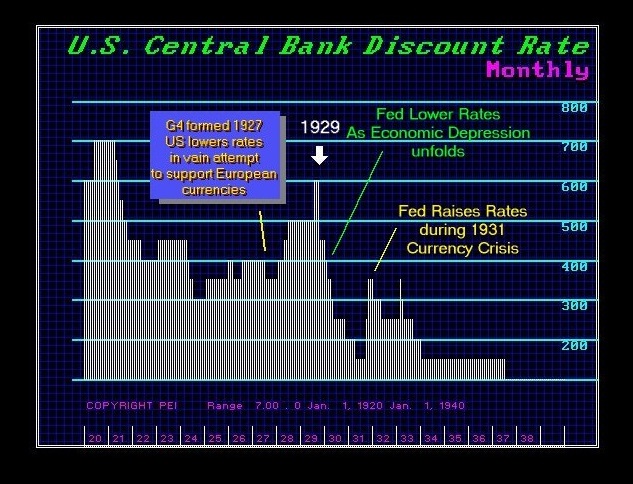 All you have to do is look at the charts. When the Fed lowered the rates in 1927, the capital smelled a rat. It began to pour into the USA. The Fed then assumed the rally in stocks was because it lowered the interest rates. The Fed responded and began to raise rates to then try to stop the speculative stock market bubble. The Fed then raised rates from 3.5% to 6% and the stock market continued to rally. All I do is look at the evidence. So much for raising rates will make the stock market decline. That is for idiots just as assuming an increase in the money supply will produce inflation. The central banks have found it very difficult to even achieve 3% target inflation currently. Why? They also fail to factor in that an increase in taxes reduces the increase in money supply so there is also a conflict between fiscal and monetary policy.
All you have to do is look at the charts. When the Fed lowered the rates in 1927, the capital smelled a rat. It began to pour into the USA. The Fed then assumed the rally in stocks was because it lowered the interest rates. The Fed responded and began to raise rates to then try to stop the speculative stock market bubble. The Fed then raised rates from 3.5% to 6% and the stock market continued to rally. All I do is look at the evidence. So much for raising rates will make the stock market decline. That is for idiots just as assuming an increase in the money supply will produce inflation. The central banks have found it very difficult to even achieve 3% target inflation currently. Why? They also fail to factor in that an increase in taxes reduces the increase in money supply so there is also a conflict between fiscal and monetary policy.
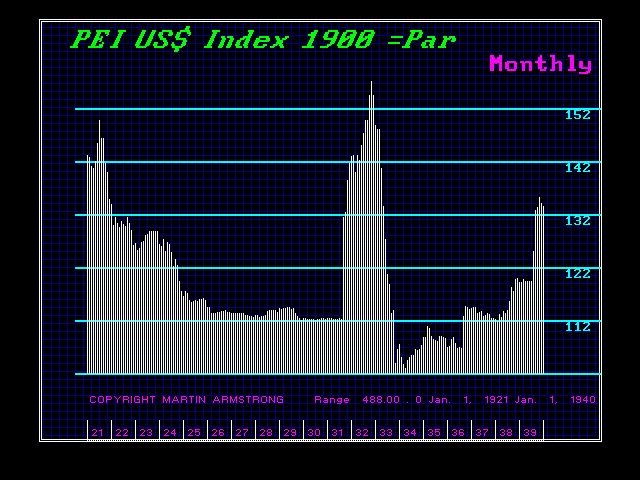 As the capital fled Europe it rushed into the dollar going into 1931. The US dollar rose so high, this is what began the whole Smoot-Hawley protectionist round which was passed in 1930 AFTER the high in equities. Because the dollar kept rising, this produced asset deflation. Commodities collapsed which sparked Smoot-Hawley because they were concerned with agriculture – not manufacture. Even silver, which peaked in 1919, declined and bottomed in 1932 with the stock market.
As the capital fled Europe it rushed into the dollar going into 1931. The US dollar rose so high, this is what began the whole Smoot-Hawley protectionist round which was passed in 1930 AFTER the high in equities. Because the dollar kept rising, this produced asset deflation. Commodities collapsed which sparked Smoot-Hawley because they were concerned with agriculture – not manufacture. Even silver, which peaked in 1919, declined and bottomed in 1932 with the stock market.
Milton Friedman criticised the Fed because all this gold came flooding into the USA and the gold reserves rose dramatically increasing the money supply but we ended up with deflation. Milton criticized the Fed for not issuing the gold in the form of coins to expand the money supply. Roosevelt’s Brain Trust also worried about maintaining the confidence in the system and wanted the austerity. They argued against any increase in money supply fearing it would create inflation as Germany has done to Europe today.
The Fed had been lowering interest rates from 1929 into 1931 just as Draghi did in the ECB with the same net result – DEFLATION. The Fed then raised interest rates during the 1931 Currency Crisis deeply concerned about CONFIDENCE.
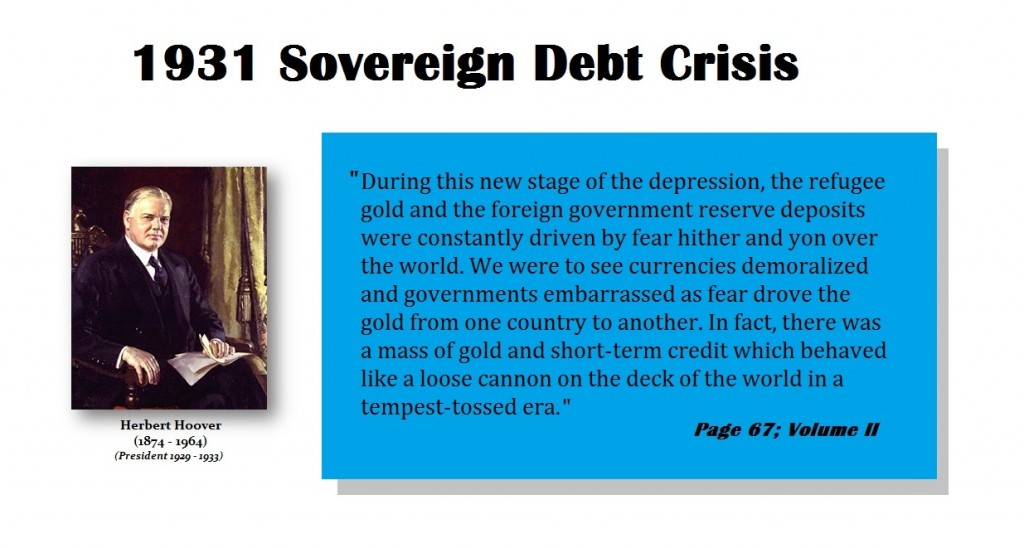
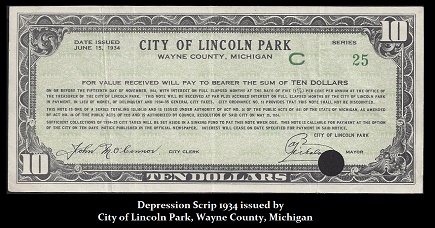 Herbert Hoover’s Memoirs recorded what took place. He said capital was rushing from one currency to the next so fast they could not form a committee quick enough to figure out what even took place. NONE of this crazy period historically had ANYTHING to do with increasing the money supply. It was all about CONFIDENCE. Over two hundred cities began to issue their own money BECAUSE there was a shortage of money. This was called Depression Script. Depression scrip was used during the Great Depression era of the 1930’s as a substitute for government-issued currency because there was a SHORTAGE plain and simple. Because of some 9000 banks closed, this added to the problem of a lack of physical currency. Therefore the concept of issuing a local currency was the answer to allow commerce to even take place.
Herbert Hoover’s Memoirs recorded what took place. He said capital was rushing from one currency to the next so fast they could not form a committee quick enough to figure out what even took place. NONE of this crazy period historically had ANYTHING to do with increasing the money supply. It was all about CONFIDENCE. Over two hundred cities began to issue their own money BECAUSE there was a shortage of money. This was called Depression Script. Depression scrip was used during the Great Depression era of the 1930’s as a substitute for government-issued currency because there was a SHORTAGE plain and simple. Because of some 9000 banks closed, this added to the problem of a lack of physical currency. Therefore the concept of issuing a local currency was the answer to allow commerce to even take place.
At one point, the U.S. Government considered issuing a nationwide scrip on a temporary basis because they feared that increasing the money supply itself would be inflationary. This idea was shot down by the Secretary of the Treasury William H. Woodin at the time. Meanwhile, it was also argued that the currency had been reduced in size on June 20th, 1929 and while the old notes were still valid, the argument was that the U.S. Bureau of Engraving and Printing did not issue enough currency fast enough which also contributed to the deflation.
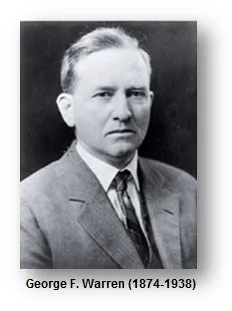 It was actually the Agricultural economist George Warren (1874-1938) who convinced Franklin Roosevelt that the way to end the deflation was to devalue the dollar. Roosevelts Brains Trust vehemently disagreed clinging to the old theory that they needed to maintain CONFIDENCE in the government by rejecting anything that would increase the money supply.
It was actually the Agricultural economist George Warren (1874-1938) who convinced Franklin Roosevelt that the way to end the deflation was to devalue the dollar. Roosevelts Brains Trust vehemently disagreed clinging to the old theory that they needed to maintain CONFIDENCE in the government by rejecting anything that would increase the money supply.
When Roosevelt devalued the dollar and confiscated gold to prevent people from profiting from the devaluation, the economy immediately boomed and rallied into 1937. Why? Suddenly assets rise in terms of the new depreciated currency and people THINK in nominal terms. So if the stock market doubles, you assume you doubled your money. But if everything else doubles in value, in terms of net purchasing power, you gained NOTHING!
 The sad part is these people who just yell and scream that I am wrong because inflation is caused by only a rise in the supply of money, to be as polite as I can, they are just incapable of understanding complex systems. Even in nominal terms, inflation can be caused by different simulations. The currency declines and we have asset inflation as I just laid in the USA from 1934 to 1937, or just look at Turkey and Venezuela in real time. The stock market rises in proportion to the decline in value of the currency because assets retain an international value.
The sad part is these people who just yell and scream that I am wrong because inflation is caused by only a rise in the supply of money, to be as polite as I can, they are just incapable of understanding complex systems. Even in nominal terms, inflation can be caused by different simulations. The currency declines and we have asset inflation as I just laid in the USA from 1934 to 1937, or just look at Turkey and Venezuela in real time. The stock market rises in proportion to the decline in value of the currency because assets retain an international value.
Then we have asset inflation as in the DOT.COM bubble where capital is rushing into some new hot investment sector. That specific asset will rises in value against all other assets. This is caused by speculation and is NOT a reflection of the decline in value of the currency. This is easily distinguished as one sector rising compared to all sectors rising because of a decline in currency value.
Then we have demand inflation, which can be illustrated by a sudden shortage of a particular product. This has appeared in commodities as the result of a serious weather condition that results in a shortage of food due to crop failures. This type of inflation has also appeared at Chrismas time when some doll becomes the new rage as was the case with Cabbage Patch Dolls.
So in the end, since the national debt is growing exponentially now thanks to interest expenditures that will exceed defense spending in 2019, obviously if you did pay off the debt by printing money, there would be a far less inflationary impact from the government budget perspective. It would no longer have the interest carrying costs so you would REDUCE the actual amount of new money being created which includes DEBT.
This is just not a simple equation for increasing the supply of money = inflation. I was the one yelling on the Capitol Hill that the Fed buying in 30-year bonds would NOT stimulate the economy BECAUSE they ASSUMED the system is an isolated domestic affair. It is not!. You buy-in the 30-year bonds and you have no idea if the seller is domestic or foreign. So the money left the country and stimulate somewhere else. You have to look at the whole system. Anyone who says inflation is created by an increase in money supply is off the reservation clinging to old theories that ignore debt, banking leverage, international capital flows, and that is just the beginning.


